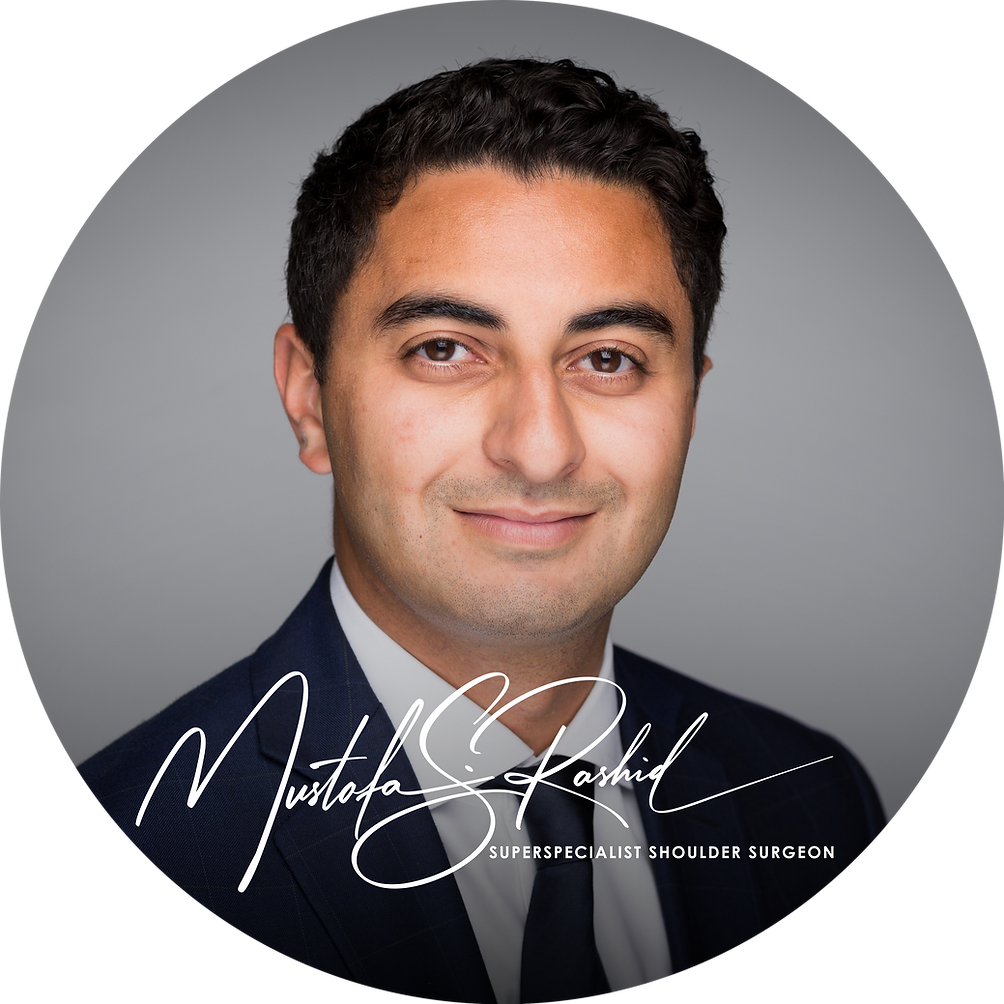Frozen Shoulder

Anatomy and Function
The shoulder joint is a ball and socket joint. The ball and the socket is enveloped by soft tissue, called the capsule. In order for the shoulder to move well and be pain-free, the shoulder capsule is usually thin, not inflamed and stretches to accommodate full movement.
“Frozen shoulder”, is also called adhesive capsulitis, which means the capsule lining of the shoulder is inflamed. This inflammation most commonly occurs spontaneously. It also often resolves without any treatment.
Causes and Risk Factors
For most patients with frozen shoulder, there is no clear cause. Some people are at increased risk of developing frozen shoulder. Women, particularly aged between 30-50 years old, diabetics, and those with thyroid problems are at slightly higher risk.
Symptoms
Classically, frozen shoulder has three phases. The first “freezing” phase is characterised by painful motion, without stiffness. The pain is often severe, constant, and worse at night. The second “frozen” phase includes pain and limitation of movement, which is often from tightness of the joint rather than due to pain. The final phase is the “thawing” phase, where most patients will slowly improve their motion, and pain is less of a feature. Everyone is different, and may progress or not, through these phases at different timelines.
Diagnosis
Patients with suspected frozen shoulder need a thorough workup to demonstrate that there are no other causes for their pain and stiffness. X-rays are often normal and MRI scans do not always reveal the problem. Dr. Rashid is a shoulder expert who will ask you about your symptoms, and examine your shoulder. Bringing all this information together is crucial to making the correct diagnosis. Then, various treatments can be discussed to help you return to normal.
Non-Surgical Treatment Options
For most people, frozen shoulder is regarded as a “self-limiting” condition, meaning that with sufficient time, most people will eventually return to normal pain-free shoulder function. However, for select patients, Dr. Rashid may offer treatments to help speed up the recovery. Physiotherapy includes stretching and strengthening the shoulder. A hydrodistention injection, involving water and steroid injected into the joint under guidance (either under X-ray or ultrasound guidance) can help stretch the tight capsule and return motion within a few weeks. Coupled with physiotherapy, this is often sufficient to treat most patients successfully. It can also be repeated if needed.
Surgical Treatment Options
Surgery is reserved for patients that have not improved with non-surgical treatments. There are several surgeries described, however Dr. Rashid’s preference is to release the shoulder capsule using a keyhole camera and direct visualisation. The shoulder is released 360o and full range of motion is confirmed at the end of the procedure. Coupled with physiotherapy and stretching programme, most patients will return to normal pain-free movement within a few weeks. Surgery is performed as a day case procedure (come into hospital and go home the same day). The sling is only used for 24 hours and then discarded to avoid stiffness.
Self-Management and Lifestyle Tips
Some patients may choose to adapt how their use their shoulders to compensate for pain and stiffness. It is not advisable to use a sling, as it will often worsen your function in the long term. Regular painkillers, including anti-inflammatory medications can help, but should be discussed with your primary care practitioner. If you feel that things are not progressing, please consider booking a consultation with Dr. Rashid to confirm the diagnosis and initiate a treatment plan that can help you recover quickly and fully.
About the Author

Mustafa Rashid
Dr. Mustafa Rashid is an award-winning, well published superspecialised surgeon from the UK, specialising in shoulders
